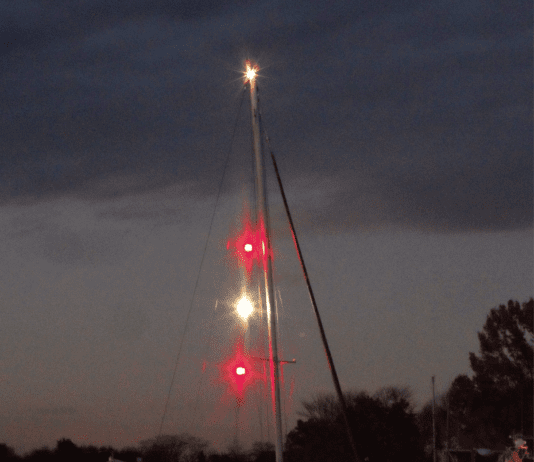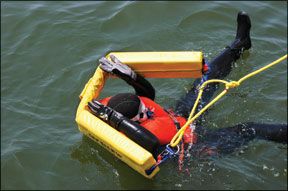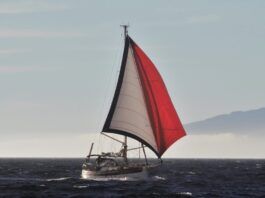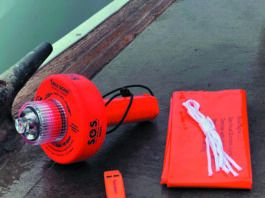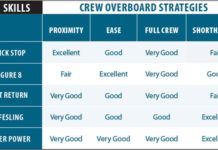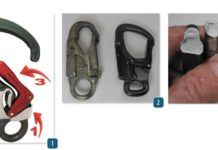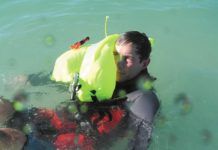Revisiting Recovery Techniques for MOB
Ocean sailing in a modern race boat or multihull with a high horsepower rig makes double-digit boat speed attainable and complicates a MOB rescue. Our research suggests that no single MOB tactic works for all occasions.
Tether Lanyard Simplifies MOB Recovery
For years, safety advocates have touted the use of a four-part block and tackle attached to the end of the boom as the hoist of choice. It affords a great dockside demo, but put to use in a rolling seaway, a crew quickly notes that boat motion causes the boom to flail about and the hurriedly dropped mainsail further complicates using the boom as a hoisting tool.
Rethinking the MOB Recovery
Man overboard recovery failures have become a frequent headline, and details about these tragedies hold lessons worth learning.
Double Check Your AIS
Nearly one year ago, the Volvo Ocean Race boat Sun Hung Kai-Scallywag was deep in the Southern Ocean bound from Auckland, New Zealand to Itajai, Brazil when 47-year-old John Fisher was thrown overboard during an accidental jibe. (Fishers tether was unclipped at the time of the accident as he moved between stations.)
Ropes for Throwing
We all know the drill. A new arrival pulls toward an unfamiliar marina or fuel dock with a breeze blowing, and they can't quite get in. An inexperienced crew is rapidly dispatched to the bow and instructed to throw a line to a helper on the dock. They grab a coil of line, heave it . . . and it lands in a tangle in the water, scarcely halfway to the dock. Confusion erupts and the boat kisses a piling or nearby boat. If and when the line is successfully thrown, its a wet tangled mess aimed at your head.
Perfecting the Toss Requires Some Practice
Passing a line to a helper on shore is as basic a part of seamanship as tying a bowline. Youve probably seen an old salt seaman cast a line 40 feet as casually as passing the pepper, but more often youve seen the line launched with a huge arm swing, only to tangle and fall short of the mark. A few simple tips, all assuming you are right handed and you are throwing -inch line.
In Search of Stability
Good stability for a racing sailor may be the ability to carry a #1genoa upwind in 20 knots of breeze. Stability for the cruising sailor involves a different and more serious set of questions. What happens when a boat is knocked down so far that it doesn't come back up? What if it comes back up, but is full of water and is at risk of sinking? From what degree of capsize should a boat be able to right itself?
Safety Tethers Under Scrutiny
On November 18, 2017, Simon Speirs, an experienced sailor, went overboard while at the bow assisting with a headsail change on a Clipper Round the World Boat CV30. It was blustery, with sustained winds of 20 knots, gusting to 40 knots. Shortly after he went overboard, his safety tether detached and he was separated from his boat. His body was recovered 34 minutes later. The cause of death has not been determined but drowning is the suspected cause. While such accidents are tragic, they offer a chance to re-evaluate equipment standards within a real-world context.
New Trends in Sailing Safety Gear
Safety at sea has become more than a noteworthy slogan. Many feel it defines the right game plan and gear choice to ensure a favorable outcome in challenging conditions. But at Practical Sailor, we also recognize its role in incident prevention, and we understand why ones boat handling ability, navigation competency, weather awareness, and sound decision-making are just as important as the gear in the grab bag-perhaps even more so.
Risk Management and Renting Adventure
Oceans may interconnect the planet, but they also act as a barrier, isolating the sailors on opposite shores. Some cruisers and racers bridge the gap, while most keep track of international sailing events and incidents online. Well-run international regattas, around-the-world yacht races, and the globalization of the boatbuilding industry help to spread the word, but-despite such publicity-not all sailing trends reach the opposite shore. Thats why the crew at Practical Sailor does its best to note whats trending. Usually, its a new boat design or piece of hardware that draws our attention, but in this article, we focus on a seafaring controversy: the growing inclination toward renting adventure.































